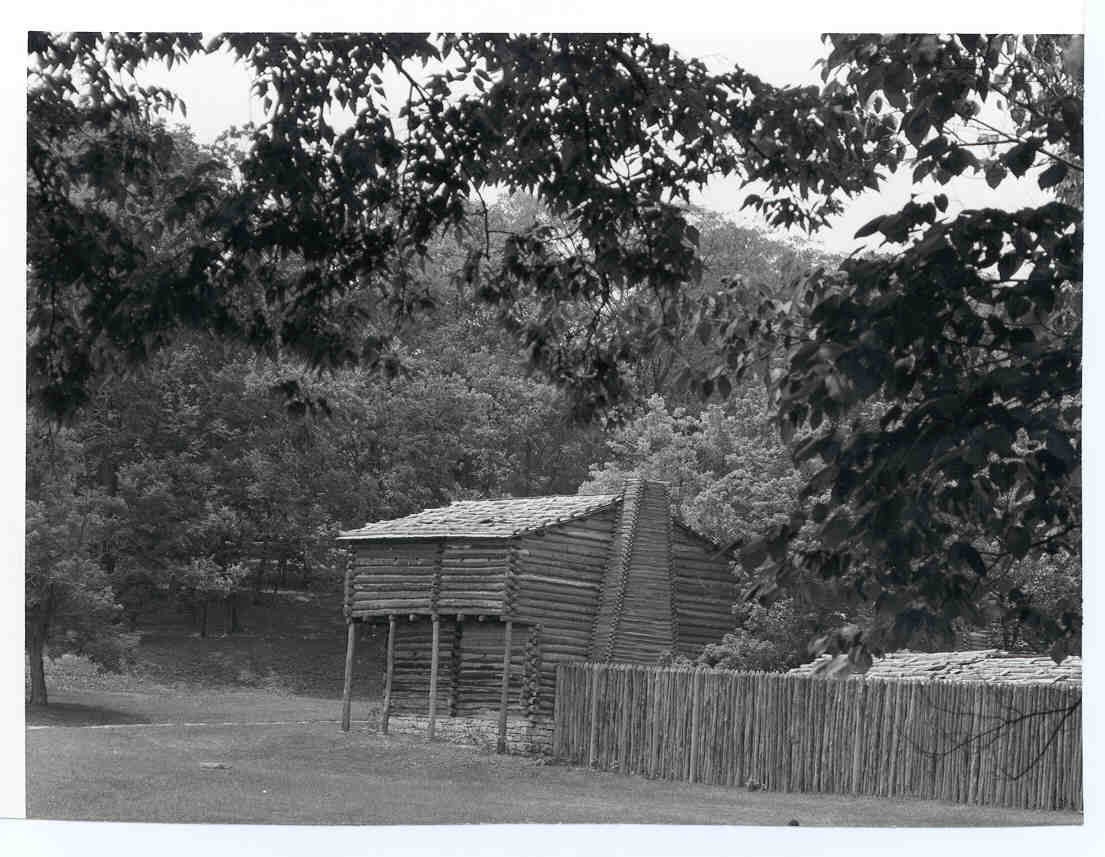
Gabetown may have looked something like this.
(By courtesy of Kentucky Department of Publicity.)
comeback if protected. Beavers began building dams on the Mackinaw and lower Panther Creek in 1952 after being absent for many decades. Deer are seen occasionally and high school boys trap raccoon, muskrats and a few mink in the Mackinaw hills each winter.
Through the vigorous reclaiming of the land our game has changed. Ducks and geese are seasonal transients in ever reducing numbers, and the prairie chickens of the grasslands have all but disappeared. There are still some quail covies, but Sportsmen's Clubs have had to restock the beautiful pheasant. The fox population has actually increased of late, but rabbits are on the decline.
The colorful and inquisitive Carolina paroquet that greeted the French in vast numbers is believed extinct since 1904 when the last flock was sighted in Florida. The passenger pigeon whose amazing migrations darkened the sky for three days at a time passed from the earth when the last one died in a Cincinnati zoo in 1914. Wild turkeys, perhaps the most edible birds of all, are no longer seen in Illinois. Birds of the deep woods such as the scarlet tanager have learned to live in town, and the dickcissel has come east with the alfalfa. The English sparrow is finally diminishing as better buildings replace the old ones that were so suited for its nesting. Though the starling relishes the corn borer and earworm, it has become a great pest in the towns and is still increasing, while the red-headed woodpecker, our only red, white and blue bird, is disappearing as the soft maples are cut down and not replaced. Hawks and large owls are less rare
Page 10